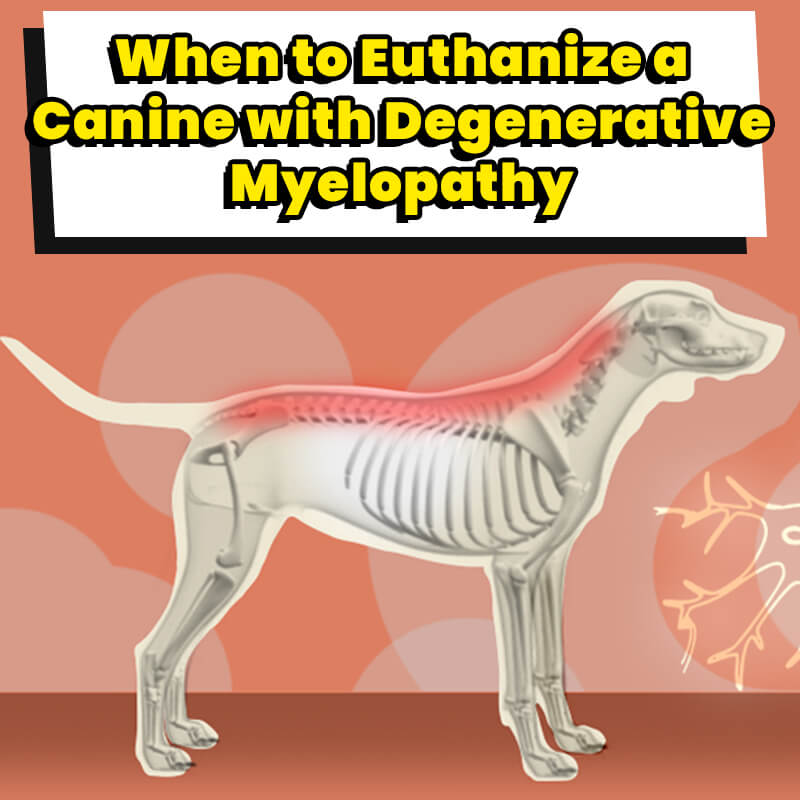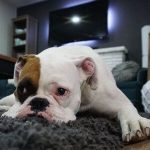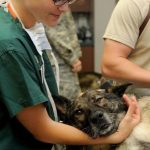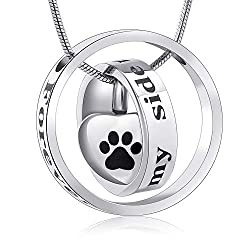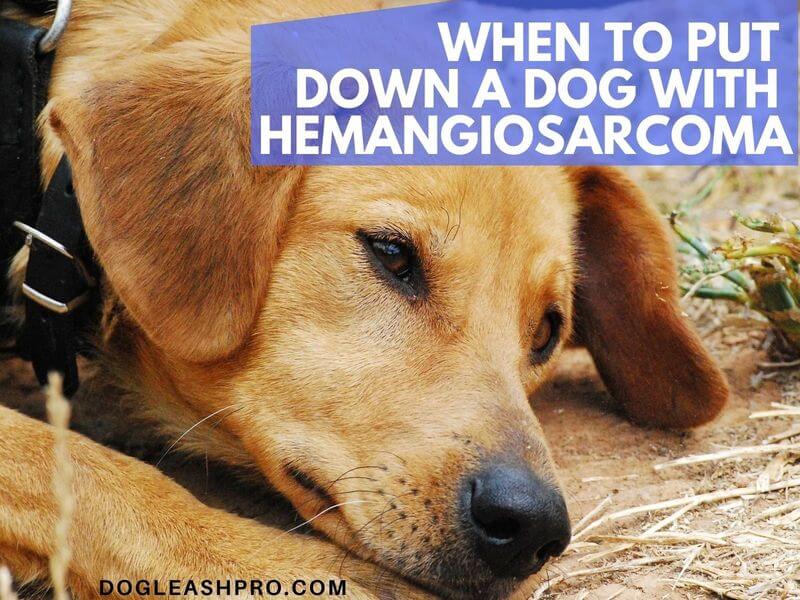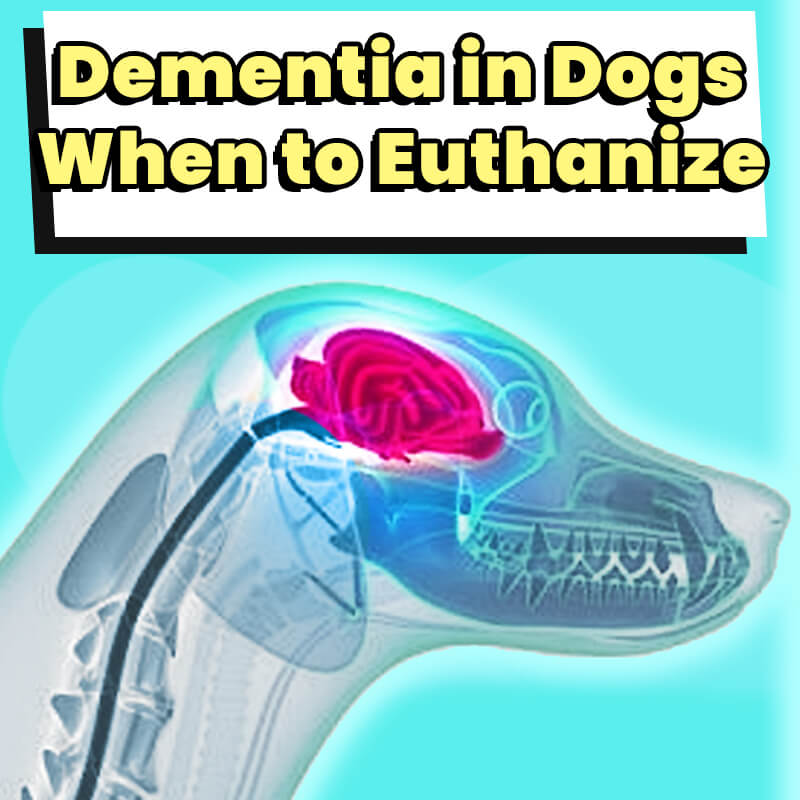
When to put down a dog with degenerative myelopathy? Generally, a dog with canine degenerative myelopathy will be euthanized or put down within 6 months to 3 years after diagnosis. Based on the stage of the disease and how it impacts your dog’s quality of life, the vet will advise when to put down a dog accordingly.
When I found out my brother’s German Shepherd had degenerative myelopathy, I was heartbroken. The devastating news came two days before Thanksgiving day. Our Thanksgiving dinner that year was filled with tears, grief, and sadness.
Note that all cases of DM are different. Some of the symptoms common to early-stages of DM closely resemble arthritis or hip dysplasia, check out our article When to Put a Dog Down with Hip Dysplasia to differentiate between the two conditions and to rule out other possible causes.
In this article, I’ll share my family’s experience with euthanizing our dog with degenerative myelopathy. I’ll discuss what DM means for your dog’s quality of life, the right time to put them down, and how long your pup may have left before seriously considering euthanization.
Table of Contents
What is degenerative myelopathy in dogs?
Canine degenerative myelopathy (DM), is also known as chronic degenerative radiculomyelopathy (CDRM).
What is DM in dogs? Degenerative myelopathy is a progressive disease caused by a gene mutation that affects the spinal cord and nerves, which can lead to hind limb weakness and gradual paralysis. When the white matter in the dog’s spinal cord slowly deteriorates, the nerves gradually lose their ability to send impulses.
Occurring mostly in older dogs between 8 and 14 years of age, the disease negatively impacts their life.
It usually starts in the middle of the dog’s back known as the thoracolumbar spine. The degeneration then spreads to the top and the bottom of the spine. Eventually, this leads to paralysis of the hind legs or paraplegia for your dog.
Between 8 and 14 years of age, dogs will start to show symptoms of degenerative myelopathy. The progression of this disease is gradual and will deteriorate gradually towards the end.
Unfortunately, there is no cure for degenerative myelopathy. It is a progressive disease and sadly the end result is always death.

READ NEXT: When to Euthanize a Dog with Liver Failure
Causes of degenerative myelopathy in dogs
Your dog’s breed, genetics, and age are just a few factors that affect your dog’s likelihood to have degenerative myelopathy.
- Dog’s genetics. Genetics is the main reason a dog develops degenerative myelopathy. Find out if your dog’s parents have any medical conditions relating to DM. If one or both parents have it, it’s very likely that your dog will too. If you’re not sure, visit your vet for genetic testing.
- Dog’s breed. This disease was formally called the German Shepherd Disease because it was originally found in German Shepherd dogs. However, it is now known that other dog breeds can also have degenerative myelopathy.
- Age. Degenerative myelopathy is commonly found in senior dogs at around 8 to 9 years of age. Since this is the age when most dogs suffer from arthritis, many pet owners confuse the symptoms with arthritis. DM is very common in older dogs so speak with your vet if you notice any symptoms or behavioral change.
Helping you decide when to euthanize your dog with degenerative myelopathy
Contact your veterinarian if you are worried your dog is suffering due to degenerative myelopathy. Together with your vet, you can make a decision about euthanization.
Don’t make any hasty decisions. Euthanization may not be the best option if your dog’s symptoms are minor and they are enjoying life. Seek treatment options if they are available for your dog.
Acupuncture could potentially be an effective treatment for managing the symptoms of this degenerative myelopathy in dogs. Treatments such as acupuncture and medical CBD oil can be effective at managing pain. Not all treatments will work for all cases of the disease, always seek advice from your dog’s vet before getting treatment for your dog.
Asking for help from qualified professionals can really take the stress out of the decision and give you peace of mind.
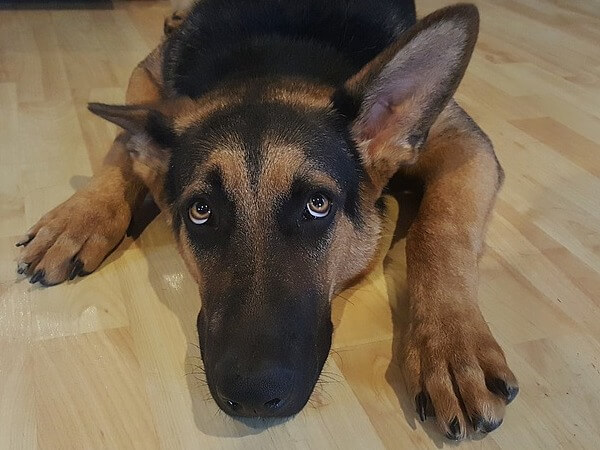
Total Time Needed :
6
Months
60
Minutes
Total Cost:
50
USD to 300+ USD
Required Tools:
Things Needed?
Steps to decide if you should euthanize your dog with degenerative myelopathy:
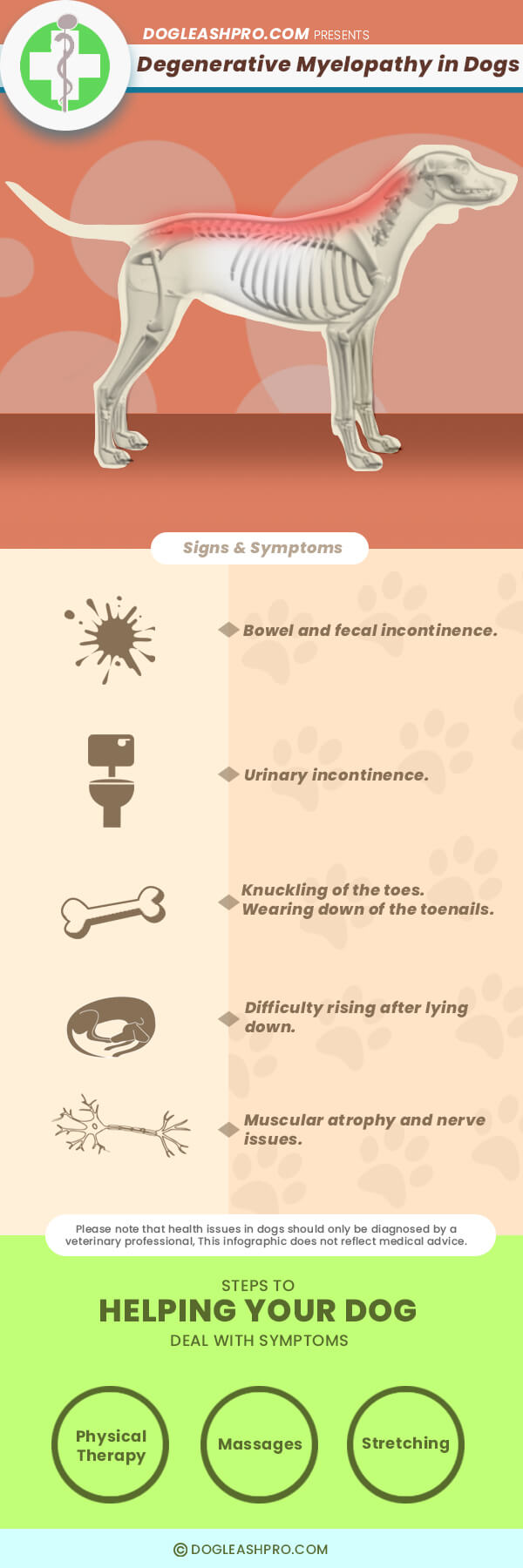
Common symptoms of degenerative myelopathy in dogs
The initial signs of Degenerative Myelopathy in Dogs include the following:
- Weakness in the hind limbs
- Swaying motion when walking
- Swaying motion when standing still
- Walking on the knuckles
- Hind paws knuckling under while walking
- Dragging hind feet and toenails when walking
- Toenails wearing down on hind paws
- Difficulty rising after lying down
- Falling over when pushed from the side
- Legs may buckle under
- Lack of coordination
- Panting
- Diarrhea
- Excessive thirst
- Whining
- Kidney failure
RECOMMENDED: When to Euthanize a Dog with Kidney Failure or Disease
Depending on what stage of the disease your dog is at, the symptoms of canine degenerative myelopathy will vary. Have your vet confirm the symptoms you’re seeing.
My brother noticed his German Shepherd, Rocky, dragging his hind feet and toenails during their daily walks. When Rocky came home, he immediately wanted to take a rest. After lying down, it was hard for him to get up. When he tried, his legs buckle under him.
RELATED: When To Put A Dog Down With Torn ACL
Dog breeds most affected by DM
The Orthopedic Foundation for Animals (OFA) pointed out that certain dog breeds are proven to be carriers of the gene that causes degenerative myelopathy. A major risk factor for DM is a genetic mutation called SOD-1.
Degenerative myelopathy usually occurs during mid-age to senior years. The most affected dog breeds are the following:
- American Eskimo Dog
- Bernese Mountain Dog
- Blue Nose Pitbull
- Border Collie
- Borzoi
- Boxer
- Cardigan Welsh Corgi
- Chesapeake Bay Retriever
- French Bulldog
- German Shepherd Dog
- German Shepherd crosses
- Golden Retriever
- Great Pyrenees
- Kerry Blue Terrier
- Miniature Poodle
- Pembroke Welsh Corgi
- Poodle
- Pug
- Rhodesian Ridgeback
- Shetland Sheepdog
- Siberian Huskie
- Soft Coated Wheaten Terrier
- Standard Poodle
- Wirehaired Fox Terrier
When we found out German Shepherd dog was on this list, we were devastated. But, we were still hopeful.
If you’re still not sure, it is best to consult with your dog’s veterinarian.
Degenerative Myelopathy diagnosis

Visiting your dog’s veterinarian is crucial. The vet should be the only one to diagnose your dog’s disease given the information he or she has on your dog’s breed, past conditions, and health situation.
As soon as you notice any troubling signs, call your vet. Don’t wait until the last minute.
Vets have a wealth of experience dealing with diseases like degenerative myelopathy. They also have the tools to help diagnose and treat your dog. Your vet may suggest new treatment options you aren’t even aware of.
Your vet will need to run a variety of tests and x-rays to rule out other causes.
The following is a list of tests your vet will run:
- X-rays
- CT scan
- MRI scan
- Blood tests
- Myelogram (Diagnostic imaging test to look for problems in the spinal canal)
DM may mimic other diseases and conditions, which is why it’s crucial to rule them out. They includes:
- Osteoarthritis
- Chronic arthritis
- Intervertebral disc disease or IVDD
- Spinal injury
- Spinal tumors
- Hip dysplasia
- Infections
- Stroke
- Cysts
Once the vet is able to eliminate other diseases or conditions, she’ll be able to confirm that it’s most likely degenerative myelopathy.
The UCDavis Veterinary Medicine noted that dogs with two copies of the mutated SOD1 gene are at a much higher risk of developing the disease. However, not all dogs with two mutated genes will have the disease, just as not all dogs with normal genes can be cleared from DM.
Smaller dog breeds tend to progress more slowly than larger dog breeds.
Since we had a large dog breed, Rocky’s condition progressed gradually. We realized we didn’t have much time left with him.
DON’T MISS: Dementia in Dogs (When to Euthanize)
Is Degenerative Myelopathy painful?
So, is Canine Degenerative a painful condition?
No, dogs that are affected by canine degenerative myelopathy do not show any signs of pain. In case a dog do appear to be in pain, it is not a result of canine degenerative myelopathy per se, instead, the pain is caused by other health issues such as arthritis.
Also, the pain can be a result of sore muscles. This is because dogs with canine degenerative myelopathy tend to overuse some muscle groups to compensate for their weak hind muscles.
How Fast Does Canine Degenerative Myelopathy Progress in Dogs?
Unfortunately, this disease progresses quickly. A lot of dogs diagnosed with canine degenerative myelopathy can become paraplegic in about 6 to 12 months.
Stages of Degenerative Myelopathy
Upon diagnosing your dog with degenerative myelopathy, your veterinarian should also tell you at what stage he is in. When we found out Rocky’s diagnosis, he was at the early stage of the disease.
The progress of degenerative myelopathy is divided into four main stages.
If you have specific questions about the Degenerative Myelopathy stages for your furry family member, we highly recommend that you speak with your veterinarian. He or she should be able to answer all your questions regarding the different stages of DM in dogs.
- Early Stage
- Mid Stage
- Late Stage
- Final Stage
Degenerative Myelopathy Timeline
Early Stage Canine Degenerative Myelopathy
In the early stages of our canine’s degenerative myelopathy, Rocky’s symptoms looked like he had osteoarthritis or arthritis. When my brother took him out for his daily walks, Rocky was dragging his hind feet along the ground repeatedly.
According to VCA Hospitals, early clinical signs include the following:
- Knuckling of the toes.
- Wearing down of the toenails.
- Top surface of the feet becomes hairless and irritated.
- Rear paws appear to be worn down.
- Falling over easily when pushed.
- The hindquarter appears to sway due to a loss of coordination in the hind legs.
- Hard time getting up.
- Unmotivated to go for a walk or climb stairs due to hind-end weakness.
- Tremors on the hind legs.
- Muscle loss in rear legs.
- Stumbling.
Mid Stage Degenerative Myelopathy
We tried to minimize Rocky’s pain as much as we could. Unfortunately, the condition gradually worsened. I remember my brother and I stepped out to buy groceries. When we came home, Rocky was laying in his own waste.
Since he couldn’t support his own weight anymore, poor Rocky couldn’t get up to pee in the wee-wee pad. He was distressed and this was also unhygienic for him as well.
These are the signs of degenerative myelopathy in the mid stage:
- Knuckling of the toes; the dog will walk on top of the rear paw instead of his paw pads.
- Bowel and fecal incontinence.
- Urinary incontinence.
- Difficulty rising.
- Muscular atrophy.
- Hind legs appear to sag due to loss of muscle mass.
- Struggling to support his weight.
- Lack of coordination.
- Poor balance.
- Loss of sensation in the rear paws.
- Dog crossing back legs when walking or standing.
- Less tail wagging.
- The tail will hang limp.
Late Stage Degenerative Myelopathy
During this stage, Rocky had more bad days than good days. As his spinal cord continues to deteriorate, Rocky became depressed and lay on his bed all day.
Sadly, the condition eventually progressed to paralysis of his rear end. He could barely function.
In the late stage, these are the signs of GM:
- Weakened front legs and shoulders.
- Jerky movements.
- Tail and legs move uncontrollably and randomly.
- Paralysis of the hind legs or complete paraplegia.
- Organ failure.
- Respiratory issues.
- Near-complete loss of coordination.
- Near-complete loss of balance.
- Standing, walking, and squatting becomes almost impossible.
- Can’t get up or stand unless assisted.
- Completely unable to support their own body.
Once our German Shepherd dog approached the intermediate to late stages, his condition and quality of life deteriorated rapidly. He was experiencing so much pain and discomfort. We knew this was the time to make a decision on euthanizing Rocky.
What are the final stages of Degenerative Myelopathy in Dogs?
Degenerative Myelopathy Dogs Final Stages
As we were making the decision to euthanize Rocky, we noticed his hind legs and tail started to have spasmodic movement. Poor Rocky! Many times throughout the day, it seems as if Rocky was about to defecate because he would try to kick out of his rear legs and his tail would raise and lower.
Rocky was definitely living a poor quality of life at this point with this level of discomfort and pain. Our vet warned us that the development of this disease is now more rapid than before. Here are the signs we notice in the final stages of degenerative myelopathy in dogs and these were confirmed by our vet:
- Loss of muscle and muscle control in the forelimbs and shoulders.
- Trouble swallowing.
- Have no control of the tongue.
- Gradual loss of movement.
- All four legs became weak and could no longer move.
- All four legs were not able to support the dog’s body weight.
- Heart, lungs, and kidneys were affected.
- Difficulty breathing due to the disease reaching his neck, cranial nerves, and brain stem.
CHECK OUT: When Should You Euthanize A Dog With Tracheal Collapse?
Pug Myelopathy When To Euthanize
Pug Myelopathy progresses differently for each Pug. An indication that your Pug may have to be euthanized is when you notice his quality of life has significantly deteriorated to the point that he is already unable to stand up and walk.
Pug Myelopathy life expectancy
A Pug with Degenerative Myelopathy is expected to live between 6 months and 3 years upon the first signs of the disease being detected. There is no cure for Pug Myelopathy but certain physical therapy and exercises can help improve a Pug’s condition.
Pug Myelopathy symptoms
Early Pug Myelopathy signs can be noticeable when their rear legs seemed to be weakening or showing signs of incoordination. They might drag their feet or stagger when walking and have difficulty jumping.
Pug Myelopathy stages
Stages of Pug Myelopathy can be subdivided into four (4) stages with the initial symptoms showing as weakness in the rear legs up to the final stage wherein there is bowel and urinary incontinence coupled with the inability to stand up.
Boxer Degenerative Myelopathy
Boxer Degenerative Myelopathy is a progressive disease affecting a Boxer’s spinal cord. The fatty substance surrounding the nerve cells, called the myelin, degenerates and causes the normal flow of nerve signals through the spinal cord to be disrupted.
Degenerative Myelopathy French Bulldog symptoms
Early symptoms of Degenerative Myelopathy in French Bulldogs include thinning of the muscle mass and loss of coordination in the rear legs caused by the gradual degeneration of the white matter tissue in the spinal cord.
What is the Best Cure for Canine Degenerative Myelopathy?
Canine Degenerative Myelopathy is a progressive and incurable health problem. The prognosis for this disease is poor because there is no specific cure to solve the problem.
But there are things that a dog owner can do to help alleviate the discomforts that are associated with the disease such as weight maintenance and physical therapy.
Treatments available for dogs with degenerative myelopathy
There are three treatments available for dogs with degenerative myelopathy. Unfortunately, my family wasn’t aware of these treatments at the time. Thus, Rocky only had a maximum of 6 months before he had to be euthanised.
Here are three available treatments. Your vet will prescribe appropriate medications as further complications arise.
Costs vary depending on which type of treatment option you choose for your pup. If you choose aggressive treatment options, you can expect to pay thousands of dollars.
- Physical rehabilitation therapy helps your dog cope with this disease. Physical rehabilitation may include:
- Exercises (at home and at physical therapy)
- Massage
- Stretching
- Hydrotherapy
- Assistive equipment. During the early to mid-stages, your dog can use assistive devices to move around including:
- An adjustable dog wheelchair for hind legs rehabilitation
- Cart
- Harness
- Sling
- Holistic modalities. Some pet owners may choose a holistic route including:
- Acupuncture
- Electro-acupuncture
- Chiropractic
- Nutraceuticals
- Chinese herbs
- Laser treatments
Degenerative Myelopathy in Dogs Life Expectancy
So, how long do dogs with Degenerative Myelopathy live?
Unfortunately, degenerative myelopathy shortens a dog’s life. The condition of DM progresses gradually and is non-reversible. As of today, there are no known cures.
Your pup’s mobility will be severely limited within 6 to 12 months of the first signs. With no treatment option, you can expect a survival time of 6 to 12 months before considering putting your dog down.
Since we didn’t provide Rocky with any treatment, it was difficult for him to move by the 6th month after his first signs. From his diagnosis to when we had to euthanize him, we made sure to give him his best life.
If you do choose to treat the disease aggressively through physical rehabilitation therapy, assistive equipment, and holistic modalities, then you can expect at best 3 years of survival time.
Note that 3 years of survival time for Degenerative Myelopathy life expectancy is the best-case scenario. It is not necessarily what you can always expect.
READ ALSO: When to Euthanize a Dog with Hemangiosarcoma
Deciding if you should euthanize your dog
Deciding to euthanize a dog with degenerative myelopathy can be tough. There will be tons of thoughts and questions racing through your head while you grapple with the idea.
When my family considered euthanizing our German Shepherd dog, Rocky, we asked ourselves the following questions first:
- Is Rocky’s quality of life good?
- What is Rocky’s mood? Is he happy, eating regularly, enjoying life or is he miserable and sad?
- Is he in pain or not in pain?
- If he is in pain, can our vet remedy this?
- Is Rocky incontinent?
- Does he have control over his bodily functions?
At the early stage, Rocky’s symptoms were minor. He was still enjoying his life so there was no reason to euthanize him. However, at the mid to late stages, he started becoming sad, miserable, depressed, and anxious. Rocky didn’t act like himself anymore.
He was also incontinent and lay in his bed for hours. When this started to happen, we realized we had to get him an elevated pet bed, which helped to reduce stress on his joints and pressure points.
We’d find Rocky lying in his own waste. Not only was this unhygienic for him, but also causing him to stress out. We knew we had to take action. Otherwise, he could start to get painful bedsores that he should not have to experience.
Regardless of what you think you should do, speak with your dog’s veterinarian to get his or her advice on the matter. Getting a second opinion from a qualified veterinarian is a must.
We discussed with Rocky’s veterinarian and decided it was time to put down our dog. Although it was a hard decision to make, it was the most humane choice. Euthanizing him saved him from further suffering.
Family discussion on euthanization
Our dog, Rocky, was part of our family. We informed many of our family members and relatives about our decision to euthanize Rocky. Our youngest cousin was 7 years old at the time and it was a difficult discussion with her. However, we knew she brave enough to take the news.
Our cousin grew up with Rocky. She came to visit once a month and grew very close to Rocky. She took the news pretty hard. We comforted her and helped her cope with the loss of our German Shepherd dog.
There are a number of ways to help your kids cope with the loss of a dog. Consider checking out sites like PyschologyToday for helpful tips on talking to children about losing a pet.
My family set aside time for everyone to say their goodbyes to Rocky. Saying goodbye helped us get a sense of closure especially when dealing with death.
Our family understood the situation and we set a date for the euthanization so every one of us knows how much time we have left with our Rocky.
RECOMMENDED: What is the Right Time to Euthanize a Dog with Osteosarcoma?
How does dog euthanasia work?
Your veterinarian will handle the entire procedure and answer any questions you may have. Depending on the size of your dog, they will either be laid down on a table for the procedure (large dog breed) or held by a vet’s assistant (small dog breed).
Your vet will then administer an injection with a syringe of sodium pentobarbital. It is an anesthetic drug that will quickly cause your dog to lose consciousness and painlessly stop the heart. Your vet will confirm the time of death by checking for a heartbeat and allow you a few moments with the pet.
This is the last time you will see your pet so mentally prepare yourself to say goodbye. Think back to any fond memories you had with your furry companion and know that they are now free from pain.
Know that you made the humane decision to not see your canine family member suffer and have given them a painless and quick end to their suffering.
Remembering your dog
After the euthanization procedure, your vet will typically suggest either a traditional burial (at a pet cemetery or in your yard if your town allows it) or a cremation.
People often choose to cremate their beloved furry companions in order to keep their remains in the house within an urn. There are many urns available online with customization to make them the perfect resting place for your dog.
Pet Insurance
In our situation, euthanization was the only option. There is still no known cure for dogs with degenerative myelopathy. Although we weren’t aware of treatments at the time, they are more than what we could afford.
If you’re going the treatment route and it’s too expensive, consider getting pet insurance. We advise getting pet insurance before you need it. It goes a long way and will help your family pay for your dog’s treatment.
Private pet insurance has been growing over the last couple of years. Don’t wait until your pet needs insurance to get it. Signing your pet up to be covered early can help keep monthly payments low and give you peace of mind.
When should you put a dog down with Degenerative Myelopathy?
As we can see, a dog with Degenerative Myelopathy can be put down within 6 months to 3 years after diagnosis from a veterinarian.
We recommend consulting with your vet as they will perform a thorough examination of your canine friends (whether he is a German Shepherd, Pug, Boxer, or French Bulldog) and determine the best time to put down your precious pooch based on the stage of the disease and how it impacts your dog’s quality of life.
Lasting thoughts
Knowing when to euthanize a dog can be a tough personal choice. At the end of the day, it comes down to a humanitarian choice to end the suffering of your beloved pet. Seeking out the advice of both your family and your veterinarian to help you come to a decision about euthanizing is often the first step.
Know your options, pet medicine is evolving every day and new treatments are being developed by some of the brightest and most committed veterinary professionals worldwide. Make sure you have all the facts before making a decision to euthanize.
Deciding when to euthanize your dog can be a very difficult decision to make. Sometimes the most humane decision is one that ends your dog’s suffering.
Certain diseases like DM are terminal with a very low likelihood of your dog pulling through. Always consult with your veterinarian about the options you have and whether euthanizing your dog with degenerative myelopathy is the right choice to make.
Related Questions
If your dogs do not receive any treatment or intervention, then they will most likely become paralyzed within the 6 to 12 months period. The disease will then progress more gradually from there.
We recommend considering humane euthanasia or end-of-life care when your dog’s front limbs start to show signs of weakness and loss of muscle control.
The mutated gene that causes canine degenerative myelopathy is the SOD1 gene, specifically the SOD1A variant. Dogs that carry two (2) copies of this variant are more at risk of developing canine degenerative myelopathy.
Dogs diagnosed with this progressive disease are usually euthanized 6 months to 3 years after diagnosis. Generally speaking, once the quality of life has deteriorated, painful as it may be, the affected dog is recommended to be euthanized.
DISCLAIMER: THIS WEBSITE DOES NOT PROVIDE MEDICAL ADVICE
The information, including but not limited to, text, graphics, images and other material contained on this website are for informational purposes only. No material on this site is intended to be a substitute for professional veterinary advice, diagnosis, or treatment. Always seek the advice of your veterinarian or other qualified health care provider with any questions you may have regarding a medical condition.

With over five years of specialized experience as an animal writer, my expertise lies in dog nutrition, health, behavior, grooming, and training. I am dedicated to delivering helpful and informative content that caters to the well-being of our furry friends. My primary goal is to empower pet owners with knowledge and ensure our canine companions thrive in health and happiness. In my free time, I love volunteering at local dog rescue centers.
